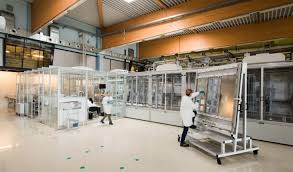
Breaking News
 Red Light Therapy And Men's Health: Does It Really Work?
Red Light Therapy And Men's Health: Does It Really Work?
 Kash Patel's New FBI Clown Show - The Bizarre Interview He Will Regret For The Rest of His Life
Kash Patel's New FBI Clown Show - The Bizarre Interview He Will Regret For The Rest of His Life
 One Rifle I Trust for Everything
One Rifle I Trust for Everything
 The West Coast Is Being Absolutely Pummeled By Trillions Of Gallons Of Rain, Wind Speeds Of Up...
The West Coast Is Being Absolutely Pummeled By Trillions Of Gallons Of Rain, Wind Speeds Of Up...
Top Tech News
 This tiny dev board is packed with features for ambitious makers
This tiny dev board is packed with features for ambitious makers
 Scientists Discover Gel to Regrow Tooth Enamel
Scientists Discover Gel to Regrow Tooth Enamel
 Vitamin C and Dandelion Root Killing Cancer Cells -- as Former CDC Director Calls for COVID-19...
Vitamin C and Dandelion Root Killing Cancer Cells -- as Former CDC Director Calls for COVID-19...
 Galactic Brain: US firm plans space-based data centers, power grid to challenge China
Galactic Brain: US firm plans space-based data centers, power grid to challenge China
 A microbial cleanup for glyphosate just earned a patent. Here's why that matters
A microbial cleanup for glyphosate just earned a patent. Here's why that matters
 Japan Breaks Internet Speed Record with 5 Million Times Faster Data Transfer
Japan Breaks Internet Speed Record with 5 Million Times Faster Data Transfer
 Advanced Propulsion Resources Part 1 of 2
Advanced Propulsion Resources Part 1 of 2
 PulsarFusion a forward-thinking UK aerospace company, is pushing the boundaries of space travel...
PulsarFusion a forward-thinking UK aerospace company, is pushing the boundaries of space travel...
 Dinky little laser box throws big-screen entertainment from inches away
Dinky little laser box throws big-screen entertainment from inches away
 'World's first' sodium-ion flashlight shines bright even at -40 ºF
'World's first' sodium-ion flashlight shines bright even at -40 ºF
Perovskite Tandem Solar Will Start Taking Solar to 43% Energy Conversion

Oxford is working with leading photovoltaic equipment supplier, Meyer Burger. They will install a silicon heterojunction solar cell line, enhanced with production equipment for the perovskite top cell. The fully integrated line will be built at an industrial site in Germany and will start production in 2021 at what will be about a 200 MW/year plant.
In 2019, Oxford PV raised £31 Million in the first close of its Series D funding round.
In November, 2020, Oxford PV was awarded €8.8 million from a German regional government, Brandenburg Ministry of Economics, as part of the EU's Regional Development Program. Oxford PV is investing €44 million in the expansion of its manufacturing facility in Brandenburg an der Havel, where the company has been based since the end of 2016.
Why Perovskite Photovoltaics?
* Enhances the 100 GW photovoltaic industry
When built on top of conventional silicon solar cells, the resulting tandem cells can break through the silicon photovoltaic performance barrier



